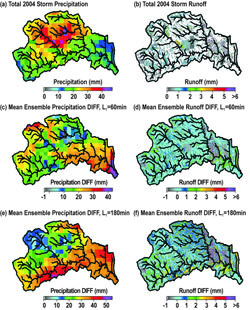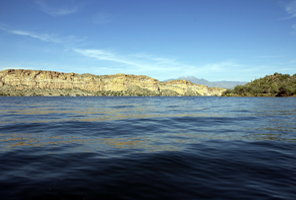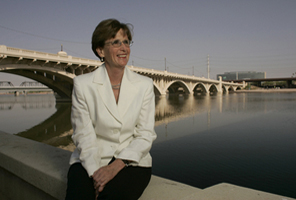Author
Dave D. White
Co-director, Decision Center for a Desert City
Associate Professor, School of Community Resources and Development
Senior Sustainability Scientist, Global Institute of Sustainability
Arizona State University
Publication
Society and Natural Resources published online on June 14, 2013.
Abstract
This case study applies the theoretical concepts of frame and framing processes to identify and describe the diagnostic and prognostic frames for water sustainability expressed through an environmental decision support system. The research examines the development of WaterSim, a computer simulation model of water supply and demand in central Arizona. Qualitative data were generated through semistructured individual and group interviews, participant observations, and document analysis. The analysis identified a diagnostic frame defining the water sustainability problem as uncertain and long-term water supply shortage caused by prolonged drought, climate change impacts, and population growth. The prognostic frame for water sustainability defined the solutions to be urban residential water demand management, retirement of agricultural lands, and conversion of agricultural water to municipal uses to achieve safe yield of groundwater. The results of the study are discussed in terms of implications for decision support systems (DSS) design.



 In Phoenix, Arizona and other metropolitan areas, water governance challenges include variable climate conditions, growing demands, and continued groundwater overdraft. Based on an actor-oriented examination of who does what with water and why, along with how people interact with hydro-ecological systems and man-made infrastructure, we present a sustainability appraisal of water governance for the Phoenix region.
In Phoenix, Arizona and other metropolitan areas, water governance challenges include variable climate conditions, growing demands, and continued groundwater overdraft. Based on an actor-oriented examination of who does what with water and why, along with how people interact with hydro-ecological systems and man-made infrastructure, we present a sustainability appraisal of water governance for the Phoenix region.

 DCDC founding director, Patricia Gober, writes in the January 15, 2013 editorial for the journal Water Resources Management, that North American water systems are inadequately prepared to deal with an uncertain future climate and other uncertainties relevant to long-term sustainability.
DCDC founding director, Patricia Gober, writes in the January 15, 2013 editorial for the journal Water Resources Management, that North American water systems are inadequately prepared to deal with an uncertain future climate and other uncertainties relevant to long-term sustainability.